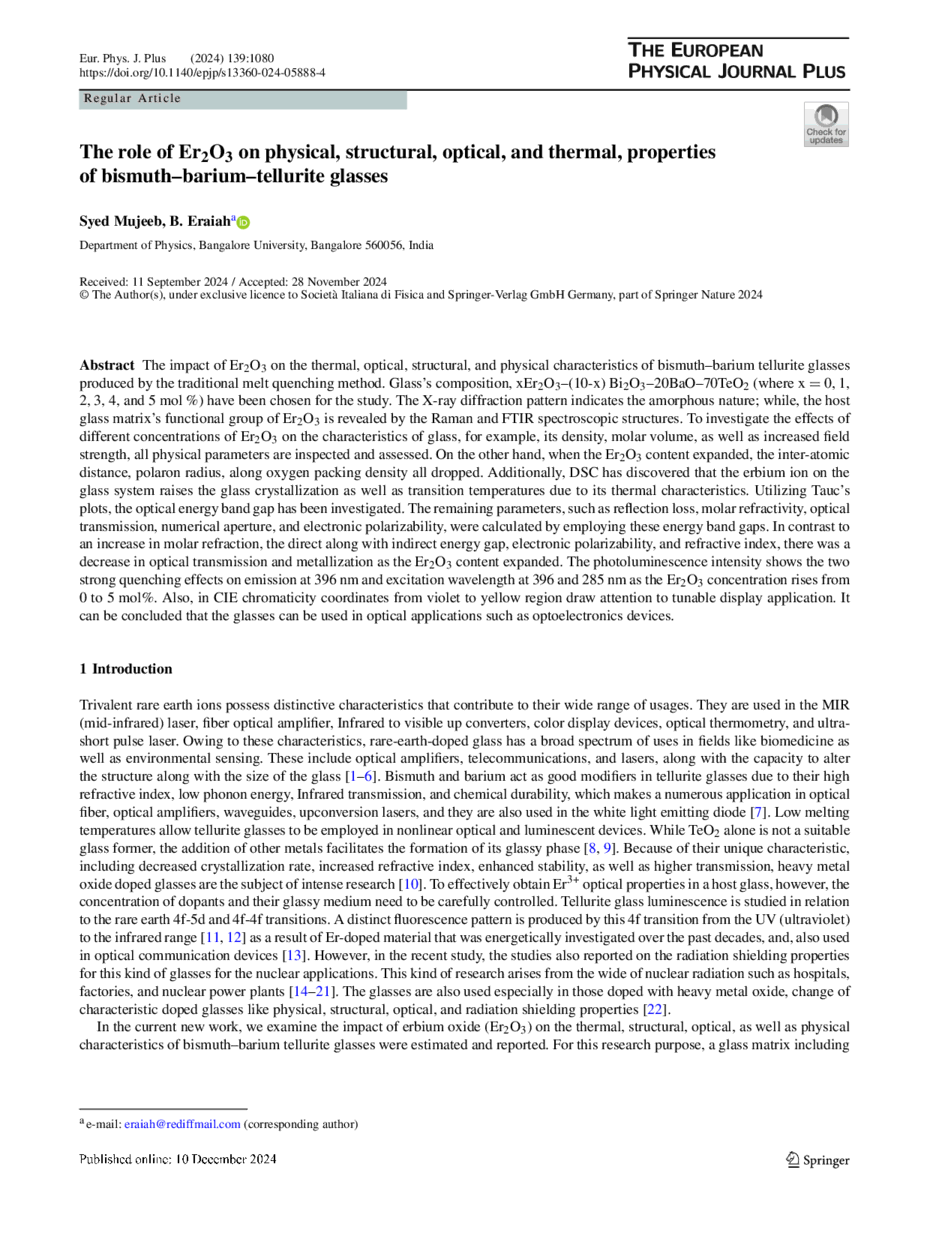https://doi.org/10.1140/epjp/s13360-024-05888-4
Regular Article
The role of Er2O3 on physical, structural, optical, and thermal, properties of bismuth–barium–tellurite glasses
Department of Physics, Bangalore University, 560056, Bangalore, India
Received:
11
September
2024
Accepted:
28
November
2024
Published online:
10
December
2024
The impact of Er2O3 on the thermal, optical, structural, and physical characteristics of bismuth–barium tellurite glasses produced by the traditional melt quenching method. Glass’s composition, xEr2O3–(10-x) Bi2O3–20BaO–70TeO2 (where x = 0, 1, 2, 3, 4, and 5 mol %) have been chosen for the study. The X-ray diffraction pattern indicates the amorphous nature; while, the host glass matrix’s functional group of Er2O3 is revealed by the Raman and FTIR spectroscopic structures. To investigate the effects of different concentrations of Er2O3 on the characteristics of glass, for example, its density, molar volume, as well as increased field strength, all physical parameters are inspected and assessed. On the other hand, when the Er2O3 content expanded, the inter-atomic distance, polaron radius, along oxygen packing density all dropped. Additionally, DSC has discovered that the erbium ion on the glass system raises the glass crystallization as well as transition temperatures due to its thermal characteristics. Utilizing Tauc’s plots, the optical energy band gap has been investigated. The remaining parameters, such as reflection loss, molar refractivity, optical transmission, numerical aperture, and electronic polarizability, were calculated by employing these energy band gaps. In contrast to an increase in molar refraction, the direct along with indirect energy gap, electronic polarizability, and refractive index, there was a decrease in optical transmission and metallization as the Er2O3 content expanded. The photoluminescence intensity shows the two strong quenching effects on emission at 396 nm and excitation wavelength at 396 and 285 nm as the Er2O3 concentration rises from 0 to 5 mol%. Also, in CIE chromaticity coordinates from violet to yellow region draw attention to tunable display application. It can be concluded that the glasses can be used in optical applications such as optoelectronics devices.
Copyright comment Springer Nature or its licensor (e.g. a society or other partner) holds exclusive rights to this article under a publishing agreement with the author(s) or other rightsholder(s); author self-archiving of the accepted manuscript version of this article is solely governed by the terms of such publishing agreement and applicable law.
© The Author(s), under exclusive licence to Società Italiana di Fisica and Springer-Verlag GmbH Germany, part of Springer Nature 2024
Springer Nature or its licensor (e.g. a society or other partner) holds exclusive rights to this article under a publishing agreement with the author(s) or other rightsholder(s); author self-archiving of the accepted manuscript version of this article is solely governed by the terms of such publishing agreement and applicable law.





